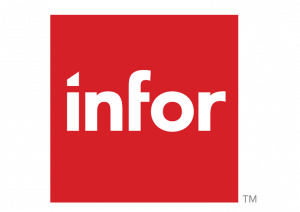The essence of a payroll system is to pay employees the right amount on time. But many public sector payroll systems are aging, resulting in inefficiencies that put timely and accurate payments at risk.
Even if legacy systems still do the job, modern systems offer so much more. Think about the difference between an old flip phone and a new smartphone. They both can call and text, but that’s pretty much where the comparison ends. The smartphone is easier to use and lets you do a whole bunch more—like surf the web and download apps. Legacy systems—just like flip phones—are more difficult to use and give you less.
There’s a reason why agencies are shifting all kinds of workloads to the cloud, payroll included. The cloud is typically easy to use and flexible, and application programming interfaces (or APIs) are generally available and easily adaptable for government use.
Cloud systems offer more security than legacy systems. Cloud providers frequently update their equipment and run the latest threat-detection technologies. Because the threat landscape changes constantly, so must the software that runs on systems. Cloud providers working with the federal government in particular must have FedRAMP security authorization. The goal of FedRAMP is to protect citizen data in the cloud, and it requires providers to follow a rigorous security compliance framework.
Cloud-based payroll systems also offer more than payroll administration. With detailed datasets, you can get time and attendance tracking, personnel scheduling and labor analytics. Because of the time saved with cloud technologies, payroll managers have more time to spend on innovative projects, like analyzing data and coming up with actionable insights.
There are also major cost savings involved with switching from on-premise payroll to a cloud-based system. A cloud system is subscription-based, where you pay for what you use, whereas an on-premise system requires continuous investments in equipment and the data center itself.
Services such as payroll, travel and finance management cost the federal government more than $25 billion annually. OMB estimates a savings of 5 to 30% by eliminating redundant contracts and technologies among agencies.
Let’s look at some best practices for implementing a cloud-based payroll system.
First, evaluate how your current processes work and understand why they’re performed that way.
Then, run a pilot and do one or more test migrations on a subset of data to work out the kinks. Consider a parallel run with the current system as well, to see what features work better and what doesn’t.
Next, go live when you open the system for full use. Certain times of the year are better suited for migrations than others, such as the start of a new tax year, so plan carefully with the owners of feeder systems.
Finally, have a backup plan. System changeovers can be complex. Even with adequate testing, a pilot and a parallel run, something can go wrong after going live. Have a backup plan in place that allows you to roll back quickly.
All in all, remember, a modern and flexible cloud-based payroll system accommodates quick legislative changes, reduces manual effort and errors, and provides better security and reports, all at a reduced cost.
This article is an excerpt from GovLoop Academy’s recent course, “The Future of Workforce and Payroll Management,” created in partnership with Infor. Access the full course here.






Leave a Reply
You must be logged in to post a comment.